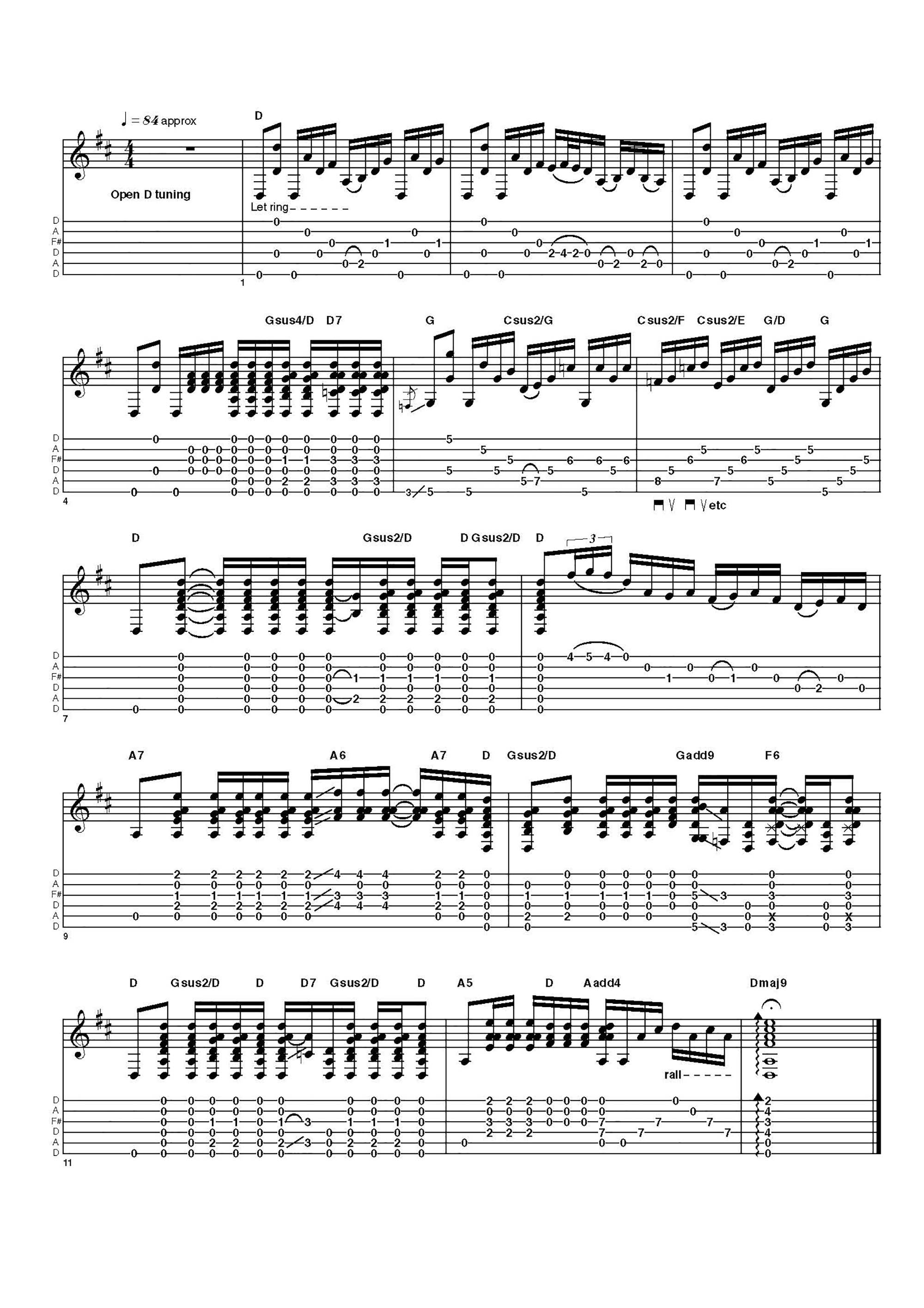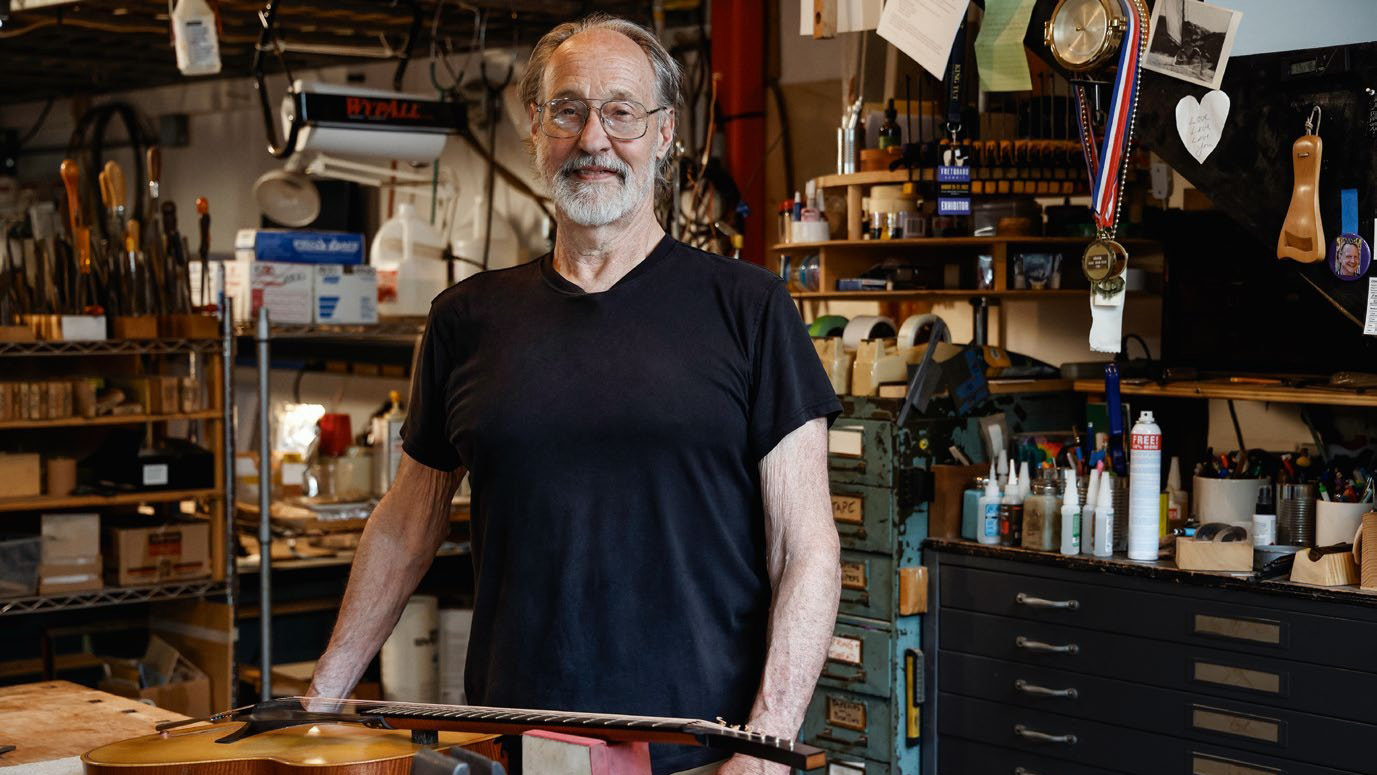How to play acoustic blues in open D tuning
Open minds with open tunings can bring new shades to the blues, and in this acoustic piece inspired by Molly Tuttle and Jimmy Page, we bring bluegrass, blues and folk to the party

Let’s clarify the tuning used before we start. I’ve gone for classic open D (from low to high): D A D F# A D. This stacks up like an E major chord in regular tuning but dropped down a tone.
Using open D as a starting point obviously means the goalposts have moved regarding fretting hand fingering and chord shapes, but what is lost in one sense is certainly made up for in opportunities for chords and melodies that would be virtually impossible in regular tuning. It’s also great for bottleneck and can be heard on many old blues recordings.
Rather than break this piece into excerpts, I’ve transcribed it in full, but it would be wise to break it down into sections as you work on it. The piece switches between strumming and flatpicking, so I’ve used a hybrid approach wherever simultaneous notes are played. In these instances, the pick takes the place of the thumb with a picking hand finger handling the higher strings. I usually use my third, but feel free to go with whatever is most comfortable to you.
Another option might be to fingerpick and strum without a pick at all, though steel strings can make a mess of your nails pretty quickly when strumming… Some sections are a great exercise for alternate flatpicking through arpeggiated chords – something that can feel counterintuitive at first, but this is the way a virtuoso such as Molly Tuttle (pictured) manages to articulate complex passages with little visible effort or fatigue.
I like to think of this piece as a combination of bluegrass, blues and folk that’s influenced by the aforementioned Tuttle and Jimmy Page as well as a little touch of John Renbourn. There is no backing track here, so the dynamics and tempo are in your full control – one of the advantages and challenges of the acoustic guitar!
Example 1.
The first six bars are predominantly hybrid-picked, punctuated with a few strums. From bar 7 it’s all flatpicked, starting with those alternate-picked ascending arpeggios. For the most part, all six strings of the strummed chords are notated. However, you will find that this isn’t always the best practice.
A good approach for the strummed sections is to think like a percussionist and accent the rhythms with bigger or smaller strums. To always hit all six strings or trying to be too precise about which ones you do strum would give a stilted result, so feel free to take some liberties and embrace the variety.
All the latest guitar news, interviews, lessons, reviews, deals and more, direct to your inbox!
Hear it here
Molly Tuttle & Golden Highway – Crooked Tree
Molly is an extremely accomplished flatpicker, with awards under her belt and a solid reputation as a serious player – definitely the ‘bluegrass‘ part of the influence in the demo piece.
On She’ll Change the flatpicked chords are precise and the solo is excellent, The River Knows showcases some flamboyant rhythmic accompaniment with something of a traditional folk vibe, while Grass Valley has an impressive mix of flatpicking and strumming.
Led Zeppelin – Led Zeppelin III
Though Jimmy Page deserves his reputation as the king of riffs, there is more to him than that. This album was largely written on ‘retreat’ in the Welsh countryside, which seems to have influenced the larger proportion of acoustic tracks and mellow vibes.
Jimmy’s folk, blues and country/bluegrass influences come to the fore on tracks such as Gallows Pole, That’s The Way and Bron-Y-Aur Stomp – the latter two being in open G tuning (albeit slightly detuned from ‘concert pitch’).
John Renbourn – S/T
In John Renbourn’s debut, released in 1965, he mixed folk, classical, bluegrass and blues and was a big influence on many, including a young Jimmy Page. Check out his deft fingerpicking on Judy, Beth’s Blues and John Henry.
Many of the tracks here are short and sweet, so while you’re at it, why not have a listen to Plainsong, The Wildest Pig In Captivity and Winter Is Gone. If you’re going to dive in and learn some of these, bring a capo and some intense concentration!
As well as a longtime contributor to Guitarist and Guitar Techniques, Richard is Tony Hadley’s longstanding guitarist, and has worked with everyone from Roger Daltrey to Ronan Keating.


